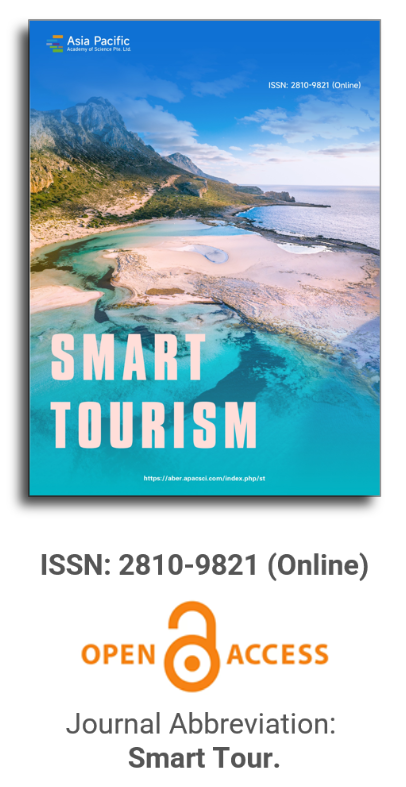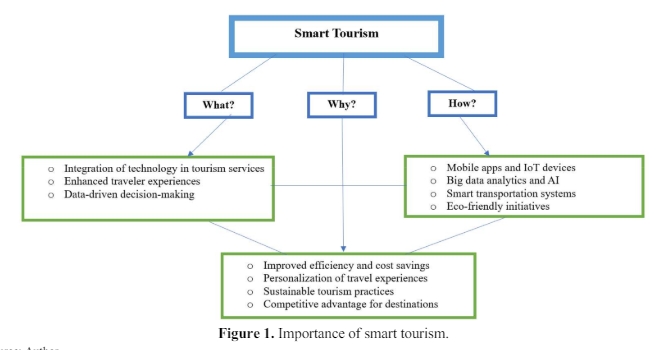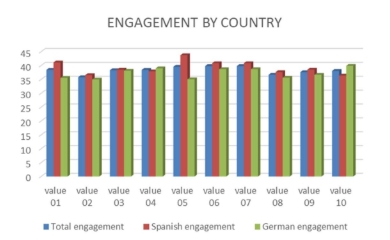


Issue release: 30 October 2022
Affected by COVID-19, “cloud tourism” has become a new way of forest tourism. Based on the survey data of 778 Internet respondents, frequency analysis and binomial Logistic regression model were used to analyze the preference and influencing factors of respondents’ participation in forest cloud tourism. The results show that the respondents prefer to relax in terms of travel motivation; In terms of tourism content, they prefer forest sightseeing activities. In terms of the mode of tourism video playback, they prefer short video or live broadcast; Preferred social media and short video software in terms of platform selection; In terms of playing time, they prefer the videos of 21–40 minutes; Prefer natural sounds or soft music in the background. Variables such as gender, age, education level, occupation, income level, travel restriction and travel experience are the main factors influencing consumers’ choice of forest cloud tourism activities. Therefore, it is suggested that the content of forest cloud tourism should be relaxing, the video playing time should be 21–40 min, and step charging mode should be adopted.
Issue release: 30 October 2022
The world tourism industry is experiencing the worst situation in its history due to the health crisis caused by COVID-19. The problem is particularly acute in countries such as Spain, which had an important tourism sector that directly employed about 3 million people, 13% of total employment, and accounted for about 12% of its GDP. In order to recover, Spain is betting on the model of Intelligent Tourism Destinations (ITD) and the ITD Network that encompasses these destinations. The ITD methodology is based on five main lines of action: Governance, Innovation, Technology, Sustainability and Accessibility. It also highlights the importance of knowledge and the use of Tourism Intelligence Systems that allow a correct decision making.
Issue release: 30 October 2022
The objective of this work was to analyze the correlation between stress in times of pandemic and the age of people, through inferential statistics in order to propose tourism strategies. The study variables were: stress level and age. The sample consisted of 4220 people from 19 provinces of Ecuador. A questionnaire was applied in google forms using the survey technique. The statistical analysis of the data was carried out using the SPSS version 23 statistical program and the corresponding non-parametric statistical test “Spearman’s Correlation”, with a confidence level of 95% and a significance level of 5%. It was concluded that those most affected in terms of stress are people between 19 and 28 years of age and that tourism should be developed with an anti-stress approach to demand on a constant basis.
Issue release: 30 October 2022
Issue release: 30 October 2022
Based on the change data of network comments of tourist attractions in the central urban area of Chongqing from 2019 to 2021, the urban tourism flow network of Chongqing before and after the epidemic was constructed in stages based on the gravity model. And from the three dimensions of resistance, resilience and adaptability, the six measurement indicators of network load, stability, growth, hierarchy, matching and transmission are evaluated. The results show that: 1) Although the comprehensive indicator of network load of urban tourism flow in Chongqing is seriously impacted by the COVID-19 pandemic, the network structure of tourism flow has obvious resilience in the indicators of stability and growth. 2) COVID-19 helps to force the optimization of tourism flow network structure. The hierarchy of the urban tourism flow network structure in Chongqing tends to be flat, and the indicator of assortative shows obvious heterogeneity characteristics. 3) Transmission is a weak link in the network structure of urban tourism flow in Chongqing, which needs to be further optimized.
Issue release: 30 October 2022
Tourism, a successful development model in the world, today faces serious challenges from the massification of large European destinations, which has generated tourism phobia, to global climate change, which has identified it as one of the activities with the highest CO2 generation. In the Americas, tourism has grown at an accelerated pace, but the major Latin American and Caribbean destinations are strongly threatened by the insecurity derived from violence, drug trafficking and the impacts of climate and its threats in the region. However, the Caribbean and Mexico are pursuing one of the largest cooperation and integration projects with the creation of the Sustainable Tourism Zone of the Caribbean (STZC) at the beginning of the century.
Issue release: 30 October 2022
The work was carried out in the Manglaralto parish in the province of Santa Elena, with the objective of generating new cultural tourism routes within the framework of sustainability and diversification of Santa Elena’s offer, as an alternative to complement the positioning of sun and beach tourism affected by the COVID-19 pandemic. The methodology implemented is based on the georeferencing and mapping of resources throughout the parish, supported by the ArcGis program, and then ranking them by applying the nine evaluation criteria established by the Ministry of Tourism of Ecuador. As a result, 163 attractions were evaluated, which were used to propose the design of three cultural tourism routes, proposals that were socialized with local authorities, the Manglaralto Parish Government, the Santa Elena Municipal Tourism Company and Tourism Management and Promotion Office in the province.
Issue release: 30 October 2022
Digital transformation is a mechanism that is being increasingly used for business growth in many sectors, especially in the wake of the 2020 pandemic in meeting tourism sectors, such as business tourism, conventions, conferences. Business tourism is a highly profitable tourism segment and of great importance for the socioeconomic development of the localities. In this context, this paper seeks to explain the influence between digital transformation and business intelligence within meeting tourism in Mexico, to subsequently determine, in a qualitative way, topics of interest. As a result, the theoretical framework of the research and conclusions of the study are evidenced.
Issue release: 30 October 2022
To obtain the impact of the new crown epidemic on the spatial structure of self-driving tourism flow during the Spring Festival Golden Week, social network and spatial statistical analysis methods are used to integrate road traffic flow big data and travelogue data to analyze the spatial structure characteristics of self-driving tourism flow in Yunnan Province during the Spring Festival Golden Week in 2018 and 2021. The results show that: 1) The self-driving tourism flow in Yunnan Province during the Spring Festival Golden Week in 2021 shows the “dragonfly” spatial clustering characteristics of “two centers, one axis and two wings”, and the new sub-core area of Qujing is added to the core area of Kunming in 2018, and the self-driving tourists are affected by the epidemic. 2) During the Spring Festival Golden Week in 2021, compared with 2018, there is no significant change in the spatial structure of tourism flow into Yunnan from outside the province, but the degree of intermediary centrality of provincial boundary nodes is significantly weakened, and the self-driving tourism flow at Wenshan junction and Lijiang junction decreased by 72.54% and 87.26%. The New Crown epidemic hindered the development of self-drive tours into Yunnan from Guangxi and Sichuan. 3) During the New Crown epidemic, tourists were less willing to visit hotspot cities, and showed overall behavioral preference characteristics of avoiding crowd gathering and focusing on health and safety. Under the New Crown epidemic, the tendency of long-distance self-driving shifts to close distance self-driving between neighboring cities centered on Kunming.
Issue release: 30 October 2022
The outbreak of the COVID-19 has severely damaged the tourism industry. However, smart tourism has become a new support for the development of the current tourism industry by virtue of its advantages in epidemic prevention and control and tourism format innovation. Tourists are the core of smart tourism services. Therefore, based on UTAUT theory, this paper discusses the application behavior of tourists’ smart tourism during the epidemic. The factors that affect the application willingness of tourists’ smart tourism are perceived security, effort expectation, performance expectation and social impact. The impact of the epidemic has a positive effect on the social impact and performance expectation, which makes more people familiar with, affirm and promote smart tourism, thus enabling the transformation, upgrading and development of the tourism industry, making rational tourism planning.
Issue release: 30 October 2022
The outbreak of the virus known as Sars-Cov2 [or coronavirus] has been significant blow that confirms a trend initiated after 2001 to the self-cannibalization or finishing of Western hospitality, but rather transforms the body itself and disposes it as a weapon to attack the other. As already mentioned, the old dichotomy between the tourist desired as an agent of economic growth and the immigrant feared as an unwanted guest gives way to a new landscape, where the tourist is seen—with some suspicion—as a potential enemy. Like the war against cancer in 1970, the war against local crime in the 1990s, and the war against terror in 2001, the world is now living a war against a virus. In this new world, classical hospitality gives way to an absolute hospitality where the hotel is recycled as a hospital.
Issue release: 30 October 2022
The COVID-19 pandemic has severely affected tourism activities. The economic and social consequences for countries dependent on this sector are serious. In Ecuador, tourism is important for development. The government proposes to reactivate it by promoting national tourism. This article aims to reflect on the challenges facing tourism activities in Ecuador, especially community tourism during the pandemic. The dialectical relationship between development dimensions is analyzed with the method of dialectical materialism, and it is applied to community tourism, overcoming the positivism that regards this activity as a source of income basically. Analysis and synthesis were applied to the literature review to draw generalizations. The findings highlight the importance of promoting conscious tourism related to sustainable human development and the good life. Identify the relationship between health and safety destinations. Develop community tourism and understand the characteristics of post-COVID-19 tourists. The conclusion is that there is a need to rethink the way tourism is conceived and developed. Community tourism must be analyzed in relation to the structural problems of the country. It must be sustainable and inclusive in all respects in order to be a factor in national development.

Prof. Hung-Che Wu
Nanfang College, Guangzhou
China
Indexing & Archiving
Asia Pacific Academy of Science Pte. Ltd. (APACSCI) specializes in international journal publishing. APACSCI adopts the open access publishing model and provides an important communication bridge for academic groups whose interest fields include engineering, technology, medicine, computer, mathematics, agriculture and forestry, and environment.


 Open Access
Open Access

.jpg)
.jpg)

.jpg)

